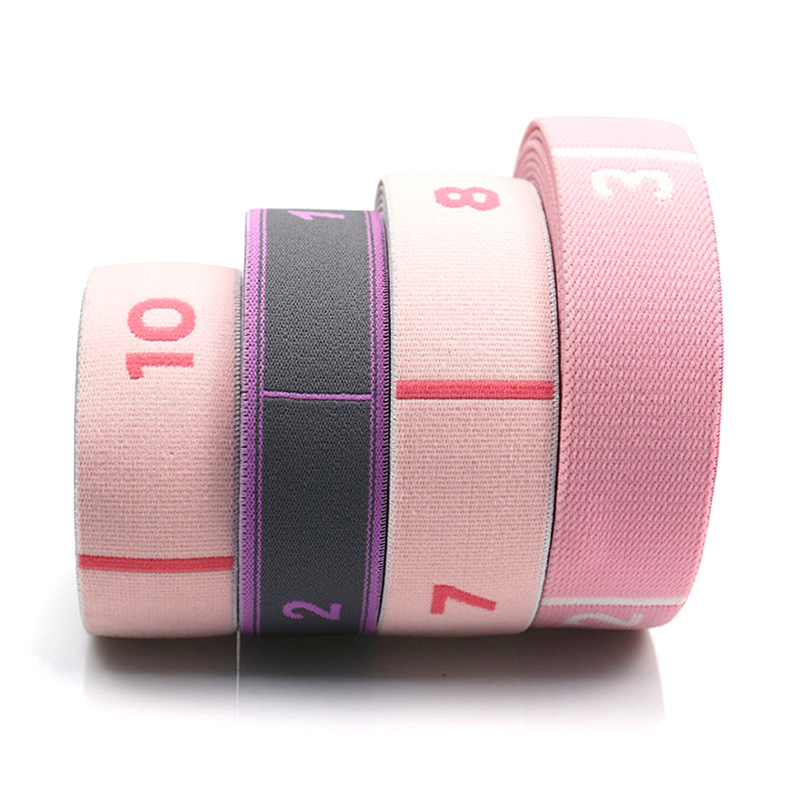Industry
 By Admin
By Admin
Quality Control Methods In Elastic Band Production
In the manufacturing of elastic bands, quality control plays a crucial role in ensuring that the final products meet the demands of various applications. Whether it is a stretch elastic waistband used in casual or activewear, a yoga waistband designed for flexibility and comfort, or adjustable hook-and-loop bands commonly found in adjustable gear, maintaining consistent quality throughout production is essential.

The production of stretch elastic waistband materials involves several stages, each requiring careful monitoring. Early in the process, raw materials such as polyester, rubber, or spandex yarns are inspected to ensure they comply with specified standards. Any deviation in material quality can affect the elasticity and durability of the finished product. This initial inspection helps prevent defective batches that could result in a stretch elastic waistband losing its stretch over time.
During the weaving or knitting process, machines must be calibrated to maintain uniform tension. This is particularly important for a yoga waistband, where consistent elasticity is necessary for comfort during stretching or exercise. Uneven tension can cause the waistband to be too tight in some areas or too loose in others, reducing its functionality. Operators regularly check machine settings and perform sample testing to verify that the fabric meets the required elasticity levels.
Dimensional checks are a fundamental part of quality control. For example, the width and thickness of a stretch elastic waistband must conform to the customer's specifications. Measurements are taken at various points along the band to identify inconsistencies. In the case of adjustable hook-and-loop bands, the size and spacing of loops are also measured to ensure proper adhesion and ease of use. These measurements help avoid issues such as strap failure or poor fastening performance in final applications.
Elasticity testing is another key method in quality control. This process involves stretching samples of the yoga waistband material to a predetermined length and then measuring its ability to return to its original shape. The test is repeated multiple times to simulate actual use and to check for signs of fatigue or permanent deformation. A stretch elastic waistband that fails elasticity tests might advance to discomfort or garment distortion, making this a critical check before mass production.
Colorfastness tests are also performed, especially for products like adjustable hook-and-loop bands that are often exposed to frequent handling or washing. The materials are subjected to various treatments, such as washing, rubbing, and exposure to sunlight, to observe any fading or color changes. Maintaining consistent color quality ensures that the straps and waistbands retain their appearance throughout their lifecycle.
Visual inspection remains an indispensable part of quality control. Experienced technicians examine the stretch elastic waistband and yoga waistband for defects such as fraying, weaving flaws, or foreign materials embedded in the fabric. For adjustable hook-and-loop bands, visual checks confirm that the loops are well-formed and free from damage that might reduce fastening strength. This human element helps catch subtle defects that machines might miss.
In addition to physical testing, documentation and traceability are important aspects of quality control. Each batch of elastic bands, including stretch elastic waistbands and yoga waistbands, is recorded with production data, test results, and any corrective actions taken. This allows manufacturers to track product history and identify trends that may signal emerging quality issues.
Adherence to international standards and customer requirements is another critical factor. Quality control teams verify that elastic band production processes comply with relevant guidelines, ensuring that products such as adjustable hook-and-loop bands meet safety and performance criteria expected in various industries, including apparel and outdoor equipment.
Packaging inspection is the final step before shipment. Proper packaging protects stretch elastic waistbands, yoga waistbands, and adjustable hook-and-loop bands from damage during transportation and storage. Labels, quantities, and packaging conditions are reviewed to guarantee that customers receive products in good condition and as ordered.
In conclusion, quality control methods in elastic band production cover a comprehensive range of checks and tests designed to maintain consistency and reliability. From raw material inspection to elasticity testing and final packaging review, each stage contributes to the quality of stretch elastic waistbands, yoga waistbands, and adjustable hook-and-loop bands. Attention to detail throughout production helps manufacturers deliver products that perform well in their intended applications and meet customer expectations without compromise.



 English
English Español
Español عربى
عربى Tiếng Việt
Tiếng Việt

